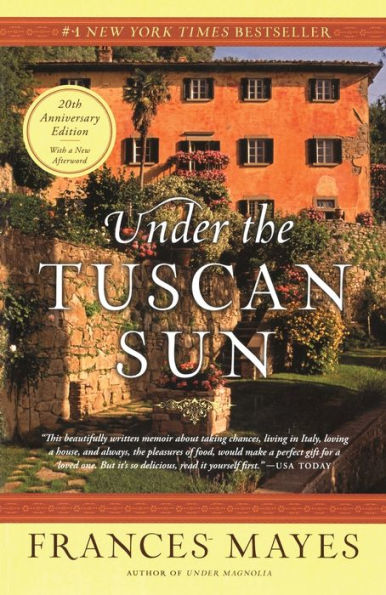1. "What are you growing here?" is the first line of Under the Tuscan Sun. In what ways does that question symbolize how the book came about? What does it say about Frances Mayes's life in Italy, and about her life in general?
2. Mayes writes of the traumatic experience of selling one house and purchasing another on various occasions in the United States. Why is the purchase of her house in Italy so qualitatively different from her other experiences with home ownership?
3. "The house is a metaphor for the self," Frances Mayes writes. Discuss some examples of this, both in her life and in your own.
4. What makes Mayes's writing style effective? How does her particular voice make her descriptions come alive? What images did you find to be particularly striking?
5. What are some of the qualities of Italian life that contrast most sharply with American culture? Which aspects of Italian life did Frances and Ed find it important to incorporate into their own lives? Which aspects would you have been drawn to?
6. How does the experience of purchasing and renovating Bramasole impact Frances and Ed's relationship, and how does their interaction affect their shared experience of buying, owning, and living in Bramasole?
7. How does the author change as the book progresses? How are her changes reflected in her tone and in her writing?
8. Mayes's house is called "Bramasole," which literally means "yearning for the sun." However, soon after she purchases the house, Mayes dreams that its real name is "Centi Angeli," or "one hundred angels." Discuss the ways in which this proves to be a premonitorydream. What are some of the other discoveries made throughout Bramasole and its grounds that lend a magical feeling to the house?
9. What role does food play, both metaphorically and literally, in the sense of delight that deepens Mayes's relationship to Tuscany and the house itself?
10. Mayes often portrays life in Cortona as timeless. How does she also convey that the timelessness is in many ways just an illusion? How does the "sense of endless time" affect her household?
11. What is Mayes's philosophy about the friend who speaks disparagingly of contemporary Italy and says it's "getting to be just like everywhere else--homogenized and Americanized" (p. 110)? How does Mayes's response address globalization in general?
12. Mayes's loving descriptions of food, her recipes, and her gardening tips add sensuality to the book, but what are some of their other functions in Under the Tuscan Sun?
13. What is Mayes's advice to readers who have "the desire to surprise your own life" (p. 191)? How would you respond to this impulse? What are some of the benefits and drawbacks to the time of life Mayes chose for embarking on a major change? Discuss some of your own turning points and "forks in the road."
14. Although Under the Tuscan Sun isn't a novel, would you say that in many ways it reads like one? If so, what is the spring, the inner tension, that propels the book forward and shapes its form?
15. Besides presenting us with wonderful descriptions of food, scenery, and people, what is the other major impetus of Under the Tuscan Sun?
16. As the book draws to a close, Mayes asks rhetorically, "Doesn't everything reduce in the end to a poetic image--one that encapsulates an entire experience in one stroke?" (p. 256). In your opinion, which image or scene best "encapsulates the entire experience" of Mayes's time in Italy?


